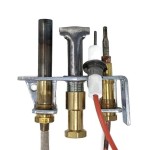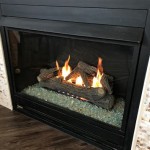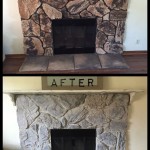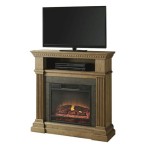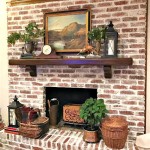The Enduring Appeal of a Fireplace with Mantel
A fireplace, particularly one adorned with a mantel, serves as more than just a source of heat; it represents a focal point, a gathering place, and a symbol of domestic comfort. The fireplace with mantel combines the functional necessity of heating with an architectural element that enhances the aesthetic appeal of a room. The evolution of the fireplace and mantel reflects changing architectural styles and heating technologies, yet its inherent charm and value as a design feature remain constant.
Historically, fireplaces were essential for cooking, heating, and providing light within a dwelling. Over time, as central heating systems became prevalent, the functional necessity of the fireplace diminished, allowing it to evolve into a decorative feature. The mantel, initially a practical shelf for storing fire tools and kindling, gradually transformed into an elaborate architectural element designed to showcase artwork, family heirlooms, and seasonal decorations. The presence of a fireplace with a mantel signifies a certain level of refinement and attention to detail in interior design.
The Architectural Importance of the Mantel
The mantel is not merely an add-on to a fireplace; it is an integral architectural component that defines the style and character of the fireplace. Its design can range from simple, unadorned wooden planks to elaborate, ornate structures featuring intricate carvings and embellishments. The choice of materials, such as wood, stone, brick, or metal, further influences the overall aesthetic. A well-designed mantel complements the architectural style of the room, whether it is a classic Victorian design, a rustic farmhouse aesthetic, or a contemporary minimalist space.
The size and proportions of the mantel are critical to achieving a balanced and harmonious design. A mantel that is too large can overwhelm the fireplace and the room, while one that is too small may appear insignificant. The mantel's height, depth, and width should be carefully considered in relation to the size of the fireplace opening and the overall dimensions of the room. The architectural style will dictate the type of detailing, such as corbels, moldings, and recessed panels, that are appropriate for the mantel. These details contribute to the visual interest and character of the fireplace.
Beyond its aesthetic function, the mantel also serves as a practical surface for displaying decorative items. Artwork, photographs, vases, and other accessories can be arranged on the mantel to create a personalized and visually appealing display. The mantel's surface provides a focal point for seasonal decorations, such as holiday ornaments or autumnal displays. The ability to customize the mantel with personal touches enhances its value as a design feature and allows homeowners to express their individual style.
The Role of Materials in Fireplace Design
The choice of materials for a fireplace and mantel significantly impacts its visual appeal and overall durability. Wood is a popular choice for mantels due to its versatility and warmth. It can be stained, painted, or left natural to complement various interior design styles. Different wood species, such as oak, maple, cherry, and pine, offer varying textures and grain patterns, further contributing to the mantel's unique character.
Stone and brick are often used for the fireplace surround, providing a sense of permanence and solidity. Natural stone, such as granite, marble, and limestone, offers a timeless elegance and can be incorporated into both traditional and modern designs. Brick, with its rustic charm and thermal properties, is a common choice for fireplaces in farmhouse and industrial-style homes. The color and texture of the stone or brick can be customized to complement the overall color scheme of the room.
Metal, such as cast iron, steel, and copper, is increasingly being used in contemporary fireplace designs. Metal mantels and surrounds offer a sleek and modern aesthetic, often featuring clean lines and minimal ornamentation. Metal can also be combined with other materials, such as wood or stone, to create a unique and visually striking design. The durability and heat resistance of metal make it a practical choice for fireplaces that are frequently used.
The Evolution of Fireplace Technology and Design
While the fundamental purpose of a fireplace remains the same – to provide heat and visual ambiance – advancements in technology have led to significant changes in fireplace design and functionality. Traditional wood-burning fireplaces have been joined by gas fireplaces, electric fireplaces, and ethanol fireplaces, each offering unique advantages and disadvantages. The choice of fireplace type depends on factors such as fuel availability, installation requirements, and personal preferences.
Gas fireplaces offer the convenience of instant ignition and adjustable flame intensity, making them a popular choice for homeowners seeking a low-maintenance heating solution. They can be fueled by natural gas or propane and often feature realistic-looking artificial logs. Electric fireplaces provide the simplicity of plug-and-play installation and offer the option of enjoying the visual flames without producing heat. They are a versatile option for apartments, condos, and other spaces where traditional fireplaces are not feasible.
The design of fireplaces has also evolved to reflect changing aesthetic preferences. Contemporary fireplaces often feature clean lines, minimalist designs, and integrated technology. Wall-mounted fireplaces, corner fireplaces, and see-through fireplaces offer unique spatial arrangements and visual perspectives. The integration of media centers, storage cabinets, and other functional elements into the fireplace surround further enhances its value as a design feature and contributes to the overall organization and functionality of the room. The fireplace with mantel, despite its long history, continues to adapt and evolve to meet the needs and preferences of modern homeowners.

Modern Ember Lenwood 48 Inch Wood Fireplace Mantel Surround Kit Unfinished Com

Distressed Hand Hewn Fireplace Mantel Solid Wood Simply Modern Woodworks

Cooper Wood Fireplace Mantel Mantels Direct

Country Living 72 In W X 5 H 9 D White Wash Pine Hollow Farmhouse Fireplace Mantel The Mantels Department At Com

Barnwood Fireplace Mantel The Collection

Fireplace Mantel 8 By 66 Long Corbels Included Solid Wood Pine Hand Hewn Customizable

Modern Ember 80 In W X 54 H 8 D Black Poplar Traditional Fireplace Mantel The Mantels Department At Com

65 Jim White Fireplace Mantel

The Fireplace Mantel How To Make It Chic And Modern
:max_bytes(150000):strip_icc()/sandandsisal-bdc76ad938a44d28ae9e23ef6c9fa331.jpg?strip=all)
17 Diy Fireplace Mantel Plans
Related Posts

